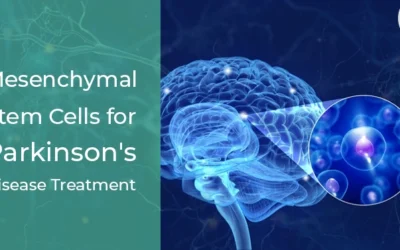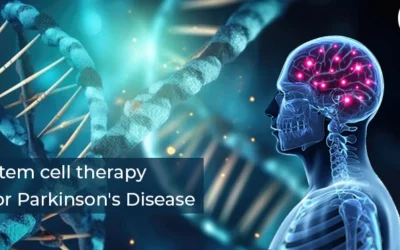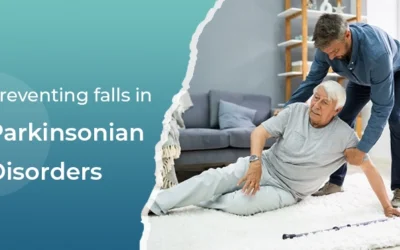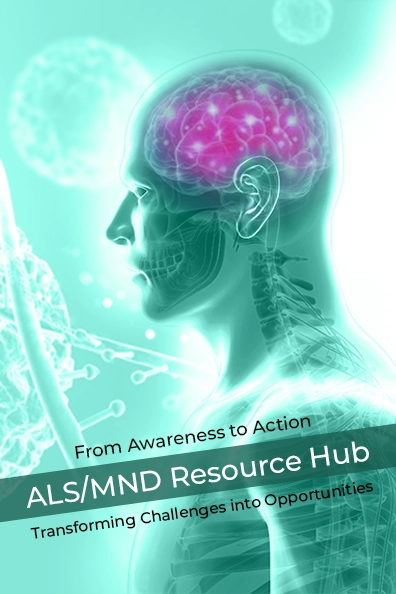Stem Cell Therapy For Parkinson’s Disease
With leading-edge technologies and years of understanding of stem cell dynamics
Recent investigations have proved that the pleiotropic effects of MSCs are mediated by the secreted paracrine mediators called the Exosomes
we offer a combination of stem cells and stem cell-derived exosomes.
Stem Cells for Parkinson’s Latest Treatment
Described for the first time by James Parkinson in 1817, the disease is characteristically linked with the functional loss of neurons due to the accumulation of protein aggregates namely Lewy Bodies. PD is clinically recognized as a core motor symptom; however, non-motor symptoms can also be linked with functional disabilities. Mesenchymal stem cells and their exosomes are important for regulating brain homeostasis through controlling neuronal inflammation; further resulting in gaining important clinical outcomes.
Stem Cells For Parkinson’s Disease: Advancells Protocol
Advancells is excited by the prodigious prospects of regenerative medicine for treating various degenerative conditions including PD. Various studies have explained how the trans-differentiation potential of mesenchymal stem cells isolated from various autologous sources as well as allogeneic sources makes them ideal candidates for therapeutic applications. Some studies have also indicated that although it might not be currently possible to exploit all the stem cells into dopaminergic neurons; these cells have been suggested to have other potential benefits when administered in combination with exosomes like anti-inflammatory properties and neuroprotective activity stimulated by resident stem cells due to paracrine effects.
With these promising investigations, Advancells has developed a potential treatment approach with the help of extensive optimization and a thorough investigation of safety and feasibility. The right quantity of stem cells, in combination with exosomes, are administered through the right path for effective clinical outcomes.
Procedure For Treatment Of Parkinson’s Disease Using Stem Cells

PD
- Low or falling levels of dopamine due to stress, hormonal imbalance, aging
- Low production of norepinephrine, another neurotransmitter lost due to damage to the nerve endings
- Formation of Lewy bodies, a clump of proteins that can further cause neuronal loss.
- Genetic factors or mutations are identified to be responsible for PD.
- Other chronic inflammatory conditions like rheumatoid arthritis are identified to be directly connected with PD.
- Post traumatic brain injury, especially from contact sports, accidents may increase the risk of the condition.
- Long-term exposure to metallic toxins like pesticides, pollutants, lead, solvents, etc. can lead to extensive deposition of Lewy bodies; further leading to PD.
- Certain steroidal medications, if consumed for a long-term period can lead to tremors and the development of other symptoms evident in PD.
Multiple clinical trials have emphasized that the rationale use of adult stem cell therapy, isolated from potential sources is safe for treatment. Although, clinicians and researchers do not have any control over the number of infused stem cells to be converted into specific cells, in existing stem cell technology; maximum cells are forced to reach the site of injury with the help of exosomes to heighten paracrine immune response for precise delivery. With an in-depth understanding of previously published trials, we propose a reversal and multimodal treatment of PD using stem cells and exosomes. With our previous case investigations, we propose
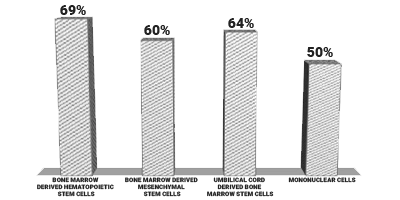

With the administration of stem cells and exosomes, the primary goal is to offer speedy recovery, reduce the level of inflammation and regain functional attributes lost.
-
Margrethe Stege, 82 years old, Parkinson’s Disease
Year of birth: 1931 Job: Not Specified Marital status: Not Specified Disease treated: Parkinson’s disease Diagnosis Although, it’s been 16 long years since I was diagnosed with Parkinson’s disease; it has taken many ups and downs. With each passing year, my efforts to…
-
Lawrence Lindsey, 68 years old, Parkinson’s Disease
Year of birth: 1958 Job: Retired Police Officer Marital status: Three Children and Six Grandchildren Disease treated: Parkinson’s disease Diagnosis Being retired from a job of police officer, and retired USAR officer; I have led a fairly active life; as both…
-
Gilda Bertran, 54 years old, Parkinson’s Disease
Year of birth: 1966 Job: Not Specified Marital status: Not Specified Disease treated: Parkinson’s disease Diagnosis I was a very active athlete and frequently participated in marathons and triathlons before I developed a back condition and had to undergo 3 spinal…

TYPES OF PARKINSON






























CAUSES OF PARKINSON

PD
- Low or falling levels of dopamine due to stress, hormonal imbalance, aging
- Low production of norepinephrine, another neurotransmitter lost due to damage to the nerve endings
- Formation of Lewy bodies, a clump of proteins that can further cause neuronal loss.
- Genetic factors or mutations are identified to be responsible for PD.
- Other chronic inflammatory conditions like rheumatoid arthritis are identified to be directly connected with PD.
- Post traumatic brain injury, especially from contact sports, accidents may increase the risk of the condition.
- Long-term exposure to metallic toxins like pesticides, pollutants, lead, solvents, etc. can lead to extensive deposition of Lewy bodies; further leading to PD.
- Certain steroidal medications, if consumed for a long-term period can lead to tremors and the development of other symptoms evident in PD.
SUPPORTIVE TREATMENT
With multiple stages of PD, involving tremors, stiffness, posture problems, etc. proper rehabilitation is considered to be very important post stem cells infusion; which will maximize functional abilities, and minimize any secondary infections if any due to regulation of inflammatory markers. Accordingly, Advancells is suggesting a host of rehabilitation services, post stem cell infusion to tackle both motors as well as non-motor symptoms of PD.






OUTCOMES
Multiple clinical trials have emphasized that the rationale use of adult stem cell therapy, isolated from potential sources is safe for treatment. Although, clinicians and researchers do not have any control over the number of infused stem cells to be converted into specific cells, in existing stem cell technology; maximum cells are forced to reach the site of injury with the help of exosomes to heighten paracrine immune response for precise delivery. With an in-depth understanding of previously published trials, we propose a reversal and multimodal treatment of PD using stem cells and exosomes. With our previous case investigations, we propose


TESTIMONIAL
With the administration of stem cells and exosomes, the primary goal is to offer speedy recovery, reduce the level of inflammation and regain functional attributes lost.

-
Margrethe Stege, 82 years old, Parkinson’s Disease
Year of birth: 1931 Job: Not Specified Marital status: Not Specified Disease treated: Parkinson’s disease Diagnosis Although, it’s been 16 long years since I was diagnosed with Parkinson’s disease; it has taken many ups and downs. With each passing year, my efforts to…
-
Lawrence Lindsey, 68 years old, Parkinson’s Disease
Year of birth: 1958 Job: Retired Police Officer Marital status: Three Children and Six Grandchildren Disease treated: Parkinson’s disease Diagnosis Being retired from a job of police officer, and retired USAR officer; I have led a fairly active life; as both…
-
Gilda Bertran, 54 years old, Parkinson’s Disease
Year of birth: 1966 Job: Not Specified Marital status: Not Specified Disease treated: Parkinson’s disease Diagnosis I was a very active athlete and frequently participated in marathons and triathlons before I developed a back condition and had to undergo 3 spinal…
Must Read Articles on Parkinson’s Disease
Current State Of Mesenchymal Stem Cells And The Race To Find A Parkinson’s Disease Treatment
Parkinson's disease is a neurodegenerative disorder that is more complex than previously thought. While we have several treatment options and therapies to manage symptoms, the search for a way to halt or reverse the progression is relentlessly pursued. In this...
What is the Present and Future of Parkinson’s Disease?
Parkinson's disease is a progressive neurodegenerative disorder that affects more than 10 million people worldwide. It presents a significant challenge for individuals to manage their condition. Starting with regular tremors and occasional rigidity (also called...
Strategies For Managing Freezing And Improving Balance For Parkinson’s
Parkinson's disease (or Parkinson’s disorders) makes movement for several people difficult, due to which they can fall. While most of the falls might result in minor scrapes, a few might have a life-altering impact on their mobility. Recently, Colum MacKinnon, a...
Meta-analysis of Parkinson’s Treatment using stem cells

Improve Speech Control
Improved Body Balance
Improved Muscle Movement
Improved Reading and Writing Abilities
Reduced Muscle Tremors
FAQs
Undifferentiated adult autologous stem cells are mutable and can metamorph into a countless number of cells as per the requirement. This remarkable property of stem cells can be exploited for treating a variety of diseases. These cells can be isolated from the most potent sources of our own body known as Adipose Tissue and Bone Marrow. Upon implanting back into the body, these cells can rapidly multiply with the great speed to restore damaged neurons, regularize the production of neurotransmitters including dopamine to retain the brain’s normal function back. In addition to stem cell therapy, a stimulation therapy can also be applied, wherein the organ is stimulated to multiple resident stem cells and secrete growth factors to create microenvironment. This treatment will act as a booster to promote regeneration.
Conventional treatment approaches highly invasive associated with many side effects. Although stem cells can naturally heal the body from damage and regenerate lost neurons to improve impaired functions. Additionally, since the body’s own cells are used for repairing, the entire treatment is minimally invasive without any side effects.
Although the root cause is still unknown, the disorder is mainly associated with the genetic abnormality.
There are many important issues to be addressed before opting for the treatment, which can satisfy answered only by experts. Thus, it is always advisable to consult and opt for the right stem cells treatment pattern.
Please go through, our treatment brochures for other Parkinson’s Disease related information.






























